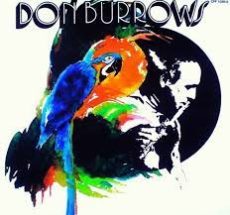
Daily Dose Of Jazz…
Donald Vernon Burrows was born on August 8, 1928 Marrickville, New South Wales, Australia and attended Bondi Public School. In 1937, visiting flutist and teacher Victor McMahon inspired him to start learning the flute, beginning on a B-flat flute. By 1940 he was captain of the Metropolitan Schools Flute Band and studying at the Sydney Conservatorium of Music.[2]
In 1942, Burrows had begun playing clarinet and appeared on The Youth Show, a Macquarie Radio show. In 1944 he was invited to play and record with George Trevare’s Australians. He became well-known in Sydney jazz circles and was performing in dance halls, nightclubs and radio bands.
During the 1960s and 1970s, Burrows had many engagements in Australia and the United States, including six years performing at the Wentworth Hotel in Sydney. In 1972, he was invited to perform at the Montreux Jazz Festival[4] and later the Newport Jazz Festival.
He received his first gold record in 1973 for his record Just the Beginning, instigating the first jazz studies program in the southern hemisphere, at the New South Wales Conservatorium of Music. He was appointed a Member of the Order of the British Empire (MBE) and appointed Chair of Jazz Studies at the conservatorium.
Though he mostly performed to classical music audiences through tours with Musica Viva and the Australian Broadcasting Corporation concert series, he had an extensive recording career with his groups and performed on albums by others. He also worked with Frank Sinatra, Dizzy Gillespie, Nat King Cole, Oscar Peterson, Tony Bennett, Stéphane Grappelli, Cleo Laine, and the Sydney Symphony Orchestra.
His arthritis from age 38, though making it somewhat difficult to play, never stopped him. In later years he had Alzheimer’s disease and lived in a nursing home in northern Sydney. Saxophonist, flutist and clarinetist Don Burrows transitioned on 12 March 12, 2020, aged 91.
More Posts: bandleader,clarinet,flute,history,instrumental,jazz,music,saxophone
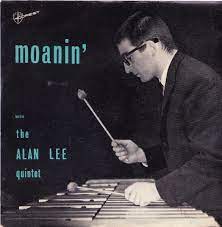
Daily Dose Of Jazz…
Alan Lee was born on July 29, 1936 in Melbourne, Australia. He was one of the first Australian jazz musicians to fuse classical music with jazz and to utilize Latin American rhythms in his music.
He led several jazz bands in Melbourne and Sydney from the late 1950s through the 1980s. Some of his recorded albums include his Seventies’ projects Gallery Concerts, The Alan Lee Jazz Quartet, Moomba Jazz ’76, Live from the Dallas Brooks Hall, and Alan Lee and Friends: Jazz at the Hyde Park Hotel in 1990, among others.
Bandleader, vibraphonist, guitarist, and percussionist Alan Lee at 86 continues to dabble in music.
More Posts: bandleader,guitar,history,instrumental,jazz,music,percussion,vibraphone
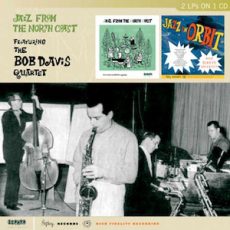
Daily Dose Of Jazz…
Bob Davis was born on July 26, 1927 in Cosmos, Minnesota and was directly inspired by the efforts of his mother, a pianist who frequently hit the road with touring bands. He began his music career as a drummer and by age 13 had been absorbed into a family band. Leaving home meant not only no longer backing up his mother, but a chance to play piano himself. By the age of 18, his piano styles were ahead of his time and he was playing improvisational jazz with some of the greats.
Davis spent a couple of years gigging with Herbie Fields prior to starting his own group, which was active through the ’50s and recorded for several small labels, The group featuring fellow Minneapolis drummer Bill Blakkestad gigged frequently around the Midwest, including Chicago, Illinois. Though influenced by Oscar Peterson and Bud Powell, he saw advantages in Nashville and established a relationship with guitarist and producer Chet Atkins on the 1953 Jazz from the Hills project that led to other session work.
He recorded three great albums, in addition to recording with Sarah Vaughn, Al Hirt, Dizzy Gillespie. He also was musical director for Playboy Clubs, taught as a music college & high school professor, and was a promoter and agent for music giants such as the Jacksons and Tina Turner. He continued playing jazz and ballads in concerts and clubs into his older years while living most of his life in Miami, Florida. After retiring at the age of 69, Bob continued to play incomparable jazz feats.
In his last days, pianist, educator, promoter and agent Bob Davis retired from music, suffering from bone cancer which robbed him of the joy of playing music.
More Posts: bandleader,history,instrumental,jazz,music,piano
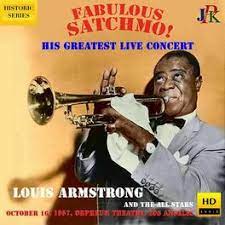
Daily Dose Of Jazz…
Danny Barcelona was born on July 23, 1929 in Waipahu, a community of Honolulu, Hawaii. A self taught percussionist, by the age of 18 in his final year in high school, he was already playing music with trombonist, singer, and bandleader Trummy Young, joining his Hawaii All-Stars in the early Fifties. When Young left to join Louis Armstrong’s combo in 1952, he assumed leadership of the band, a sextet known as the Hawaiian Dixieland All-Stars. They would tour the Hawaiian Islands, Japan and the rest of the Far East.
Danny was introduced to Louis Armstrong by Young in 1956 and upon his recommendation, in 1958 at the age of 27 became Armstrong’s drummer for 15 years. As a Filipino-American, Armstrong would frequently introduce him to audiences as The Little Filipino Boy, then follow up by calling himself the Little Arabian Boy.
He appears on more than 130 of Armstrong’s recordings including Hello, Dolly! and What a Wonderful World. He toured with Armstrong and Young around the world until illness took Armstrong and he returned to Hawaii. There he became a longtime performer at the Hilton Hawaiian Village Hotel, and worked for many years at Harry’s Music Store and the Easy Music Center.
In 1979, he returned to the mainland and settled with his family in Monterey Park, California. Drummer Danny Barcelona transitioned in Monterey Park on April 1, 2007, due to complications from cancer at the age of 77.
More Posts: drums,history,instrumental,jazz,music
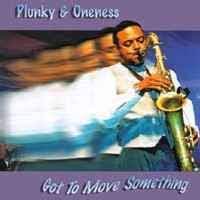
Daily Dose Of Jazz…
James “Plunky” Branch was born on July 20, 1947 in Richmond, Virginia and educated in the city’s segregated schools. He then attended Columbia University in New York City, but by 1971 he had moved to San Francisco, California. It was here that he formed Juju, a musical group that combined rhythm and blues, jazz, soul, and African musical influences.
He founded the band Plunky & Oneness, which began as Juju in 1971 which he renamed twice, Oneness of Juju and Plunky & the Oneness of Juju, before it was given its current name in 1988. One of Plunky & Oneness’ songs, Every Way But Loose, is featured on the video game Grand Theft Auto: Vice City Stories, playing on fictional radio station Paradise FM.
Branch is the president and founder of the independent record label N.A.M.E. Brand Records, through which he has released 25 albums. As a studio musician Plunky has worked for The Cosby Show and has appeared on several avant-garde jazz albums.
As an educator he has been Director of the Jazz Ensemble at Virginia Union University as well as an instructor of Afro-American Music History at Virginia Commonwealth University.
He has been the recipient of two NEA Jazz Fellowships and was appointed to the Governor’s Task Force for the Promotion of the Arts in Virginia. In 1999 he was recognized by Richmond Magazine as Musician of the Year for 1999. J. Plunky Branch continues to perform, record, compose and produce.
More Posts: bandleader,educator,history,instrumental,jazz,music,producer,saxophone,songwriter



